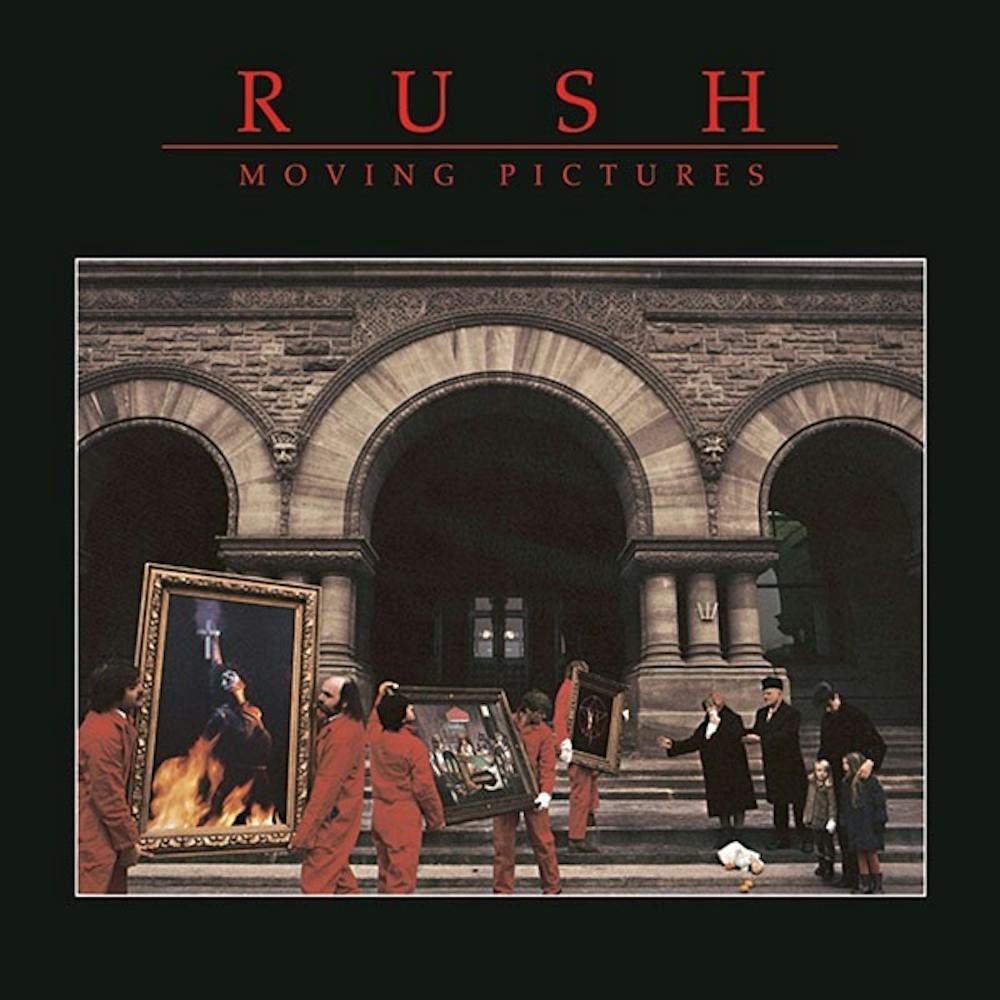Gene Simmons once said, “What kind of band is Rush? It’s Rush.” That might be the most accurate description of this seminal band out of Toronto.
Feb. 12 marked the 40th anniversary of Rush’s eighth studio album “Moving Pictures,” a record that sold over four million copies in the United States and was also certified quadruple-platinum in Canada. The album remains the band’s most popular and recognizable entries of their extensive discography.
While Rush had steadily built their following since the late ‘60s and commanded a heavy presence on the airwaves in their home country, the trio reached worldwide prominence and ascended the throne of commercial and artistic rock mastery with “Moving Pictures.” The record, the band’s first to reach No. 1 on the Canadian Albums Chart alongside a No. 3 peak on the U.S. Billboard 200, helped catapult Rush into the mainstream rock scene and forever altered the way future bands would approach the idea of progressive rock.
Rush has long been identified with the songs from this album, from enormously popular hits like “Tom Sawyer” and “Limelight” to the wild ride of musical experimentation found on “YYZ.” The album truly showed how fearless the group was when it came to moving their sound and music forward.
A band that was never a prisoner of the moment, Rush was able to transcend the rock genre through their resistance to rock and roll traditionalism adherence.
They substituted the simple guitar riffs and repetitive lyrics endemic to much of their generation with new wave synthesizers and lyrics that read more like a science fiction or fantasy novel than a pop song. Neil Peart, the band’s late drummer and chief lyricist, possessed a love for literature, and it was this love that guided the lyrics he penned.
Peart was also the driving force behind the band’s best rhythms and is regarded as one of the great rock drummers of his era, with Rolling Stone ranking him fourth on their “100 Greatest Drummers of All Time.”
“Tom Sawyer,” the album’s bombastic opening track, was Peart’s reimaging of the famous Mark Twain character as a modern-day rebel who is wracked with the same type of defense mechanism that is reflected in the society around him. In Peart’s version of Sawyer, he is his own man who can’t be bought or sold to any person, god or government.
“Red Barchetta” was inspired by a short story written by Richard S. Foster entitled “A Nice Morning Drive.” Given an Orwellian twist, the song’s lyrics center around a young man who takes his uncle’s sports car out for a drive. Despite the laws in this dystopian future banning high vehicular speeds, the protagonist flys down country roads as they’re pursued by hovering law enforcement vehicles.
Not your typical rock song.
But the one song that truly captures the essence of the album and the lyricist who brought it to existentialist life is the track “Limelight.”
The song, a deeply personal statement on Peart’s experiences with fame, centered on his discomfort with the idea of being a celebrity and how it intruded into his personal life. Perhaps the one line in the song that best sums this up is, “I can’t pretend a stranger is a long-awaited friend.”
Get content from The Daily Lobo delivered to your inbox
Peart’s lyrics, however mystical and thought-provoking, would be incomplete if it weren’t for the musical talent that both he and his two bandmates possessed.
Geddy Lee, with his unique voice and unmistakable rhythmic — and often hypnotic — bass lines.
Alex Lifeson and his fearless, inventive guitar riffs and solos.
And finally Peart, with his legendary stamina and ability to make you feel every drum strike through your speakers.
Together, the trio represented musical purity the likes of those who grew up on Zeppelin-esque hard rock and oft-banal Summer of Love folk serenades had never seen before. Their tireless devotion to their craft and mastery of their respective instruments allowed them to become more than just a rock band — they became pioneers.
“Moving Pictures” helped set the stage for Rush to become the world-renowned group we know today. On the 40th anniversary of their greatest musical accomplishment and scarcely a year removed from Peart’s tragic death, we owe it to ourselves to again listen to this truly once-in-a-lifetime album.
Gino Gutierrez is the managing editor at the Daily Lobo. He can be contacted at managingeditor@dailylobo.com or on Twitter @GGutierrez48






